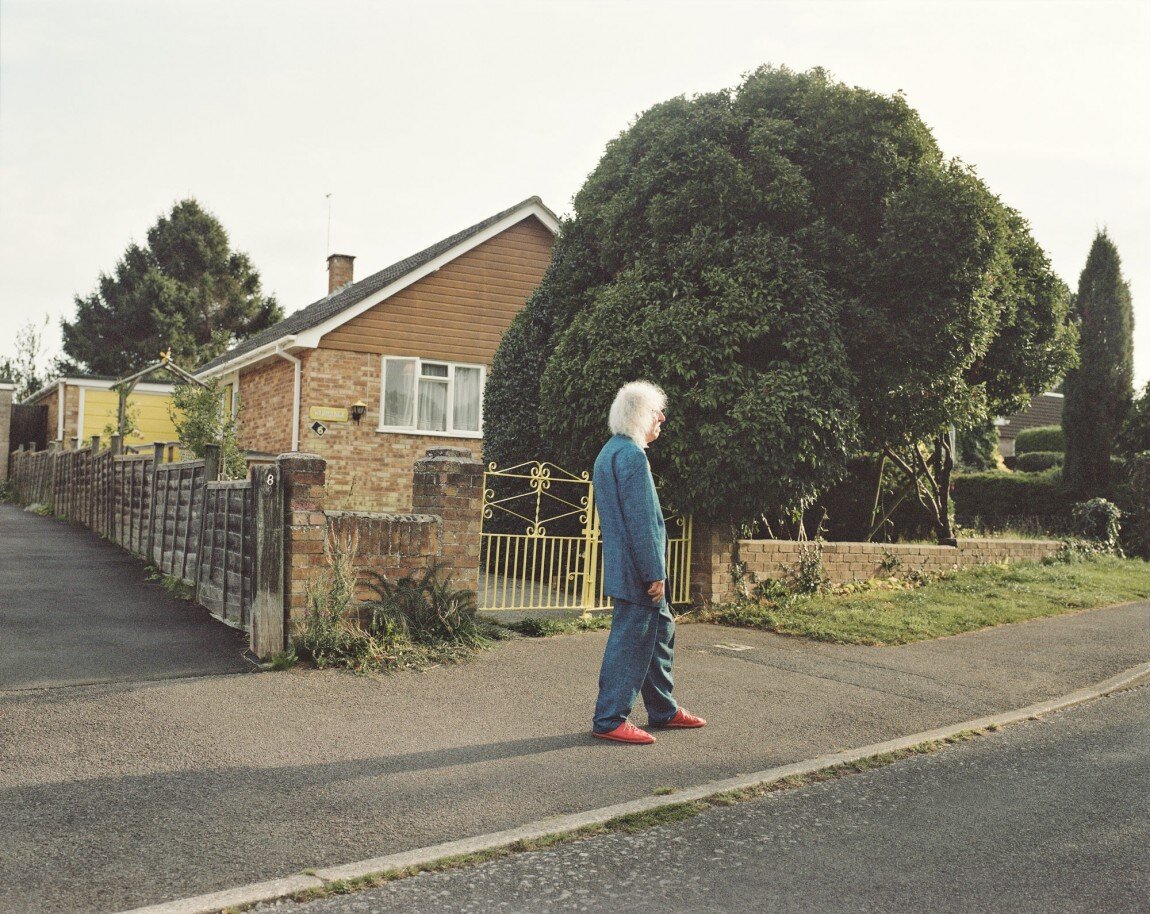Bob Parks, photography by Sophie Ebrard
Review
Nathaniel Mellors & Marcus Werner Hed:
The R&B Feeling: The Bob Parks Story
First published by Art Monthly, November 2015
The R&B Feeling premiered 5th June at Sheffield Doc Fest.
There is a tone of warm reassurance in the voice of Bob Parks as he offers a disclaimer directly to camera in the opening scene of The R&B Feeling, 2015, a documentary that seeks to make some sense of his long and dauntingly prolific but only recently acknowledged artistic career. ‘There are scenes in this film you might find complex, alarming and upsetting,’ he states, ‘but it’s important to remember that human life is also complex, alarming and upsetting. Sometimes it’s just better to accept that bad or strange things happen.’ This sentiment could not have a more appropriate interlocutor than Parks, whose mixed fortunes have provided a cathartic energy capable of nourishing a remarkably earnest and yet to be fully comprehended oeuvre of vibrational paintings, visionary scribblings, rhythm and blues recordings and ecstatic actions.
Co-written and directed by filmmaker MarcusWerner Hed and artist Nathaniel Mellors, this fascinating portrait makes plain from the outset the difficulties encountered when attempting to portray such a ‘confounding and exhausting subject’; Bob’s multifaceted identity as laygospel preacher, voodoo initiate, recording artist and postman would only extend and complicate the myriad strains and resonances of a multi-directional aesthetic practice, unfolding concurrently to a life of spiritual fugues and psychological turbulence.
But we begin simply enough with the story of Parks’s journey from Leicester College of Art to the sun-bleached climes of Los Angeles in the early 1970s – a context in which he would come to find himself fittingly situated in an emergent milieu of American performance innovators including Barbara T Smith and Chris Burden. Reflecting on the transgressive tendencies of the period, Parks mirthfully intimates that he had been faced with a choice of sex or self-mutilation, opting pragmatically for sex on the simple premise that ‘it was safer’. His work at this time incorporated bikini-clad public provocations, communal painting exercises and the cultivation of ‘Big Nose’, an alter-ego worthy of a cathode-ray Cabaret Voltaire whose trademark spasmodic fits would infiltrate national television programming through prime-time staple The Gong Show.
Many of Parks’s peers came to achieve long-standing institutional recognition and commercial patronage, but the emotional and libidinal consequences of a marital breakdown prompted him to end a term of stateside activity by returning to the quiet domesticity of his parent’s home in Sway, a small village in the New Forest, Hampshire. This is where the film locates Bob, 40 years after his return to the UK, living in an outwardly nondescript suburban bungalow to which we are afforded interior access via a tour of the small universe the house has evolved to contain. It is a private world, rich with stone carvings, ceremonial voodoo altars and photorealistic portraits of evangelical pastors, a vortex of modernist influence, gnostic insight and playfulness. Most surprisingly, at the centre of this living museum we find Marjorie Parks, the artist’s elderly mother for whom he had come to act
as carer.
While we see Bob journey back to LA to initiate thoughtful reacquaintances with fellow artists and the African-American community of the Starlight Church of God and Christ – a group that had come to exert a huge influence on his early religious and aesthetic development – the insight garnered from talking heads pales in comparison to the light cast on Parks and his deeply felt disposition as a creative being by the genuinely profound depiction of intimacy we see conducted between the artist and his mother. It is a complex, caring and reciprocally challenging relationship made all the more poignant by her death in a car crash during the course of filming – an accident in which Parks is tragically confirmed as driver. The unflinchingly self interrogative interviews and commemorative rituals that follow extend the film beyond mere biographical recapitulation into something catalytic, affirmative and emotionally charging as Parks arranges a performative celebration of his mother’s life on a hilltop overlooking LA.
The R&B Feeling is a welcome addition to the unfolding roster of recent documentaries and artists’ films that have attempted to excavate and reposition eccentric or overlooked English artists, for example Nick Abrahams’ and Jeremy Deller’s The Bruce Lacey Experience (2012), or Ben Rivers portrait of Rose Wylie, What Means Something (2015). I would suggest it stakes its own ground with the unusual filmic resonance it finds with its subject, foregrounding the ecstatic energy of this singular artist in a manner that left the audience buzzing like a joyous congregation. The result is a peculiar piece of film that manages to downplay the strictures of an analytical biopic in favour of a difficult, melancholic but ultimately rapturous portrayal of art’s aptitude for the articulation of trauma and its emotional reconciliation. The R&B feeling indeed!

